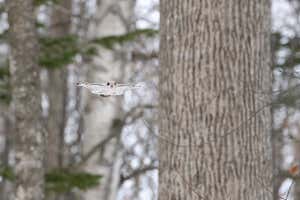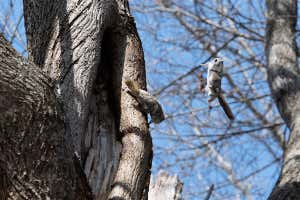[ad_1]

Tony Wu/naturepl.com
Photographer Tony Wu
Agency NaturePL.com
THE image above shows one of Japan’s most charismatic and rarely seen residents as it glides through its Hokkaido habitat: Pteromys volans orii, a subspecies of the Siberian flying squirrel.
Advertisement
It and the other squirrels below were captured by photographer Tony Wu, who spent several weeks in their snowy home during mating season. Siberian flying squirrels are hard to spot, and this opportunity was mostly down to luck, says Wu, since the animals are nocturnal and are usually high off the ground.
Like all flying squirrels, they don’t actually fly, but use the skin membranes between their forelimbs and hindlimbs, called patagia, to glide from tree to tree. They can soar for some 50 metres – an impressive feat for an animal that only grows to be up to 23 centimetres long.
Below, a pair of squirrels peek out from the branches after foraging for food.

Tony Wu/naturepl.com
Hokkaido is the northernmost prefecture of Japan and the only place in the country where this subspecies of Siberian flying squirrel is found. Further south, on the Honshu and Kyushu islands, they have been replaced by the Japanese dwarf flying squirrel (Pteromys momonga).

Tony Wu/naturepl.com
Above, two males fight for the right to mate with a female. The image captures the moment when one male body-slammed the other off the tree, although Wu says the squirrel was able to glide to a safe landing.
More on these topics:
[ad_2]
Source link




